Rapid antimicrobial susceptibility testing with pathogen identification in sepsis

Accurate and rapid antimicrobial susceptibility testing with pathogen identification in bloodstream infections is critical to life results for early sepsis intervention” Edmiston et al (2018). Abstract: Accurate and rapid antimicrobial susceptibility testing with pathogen identification in bloodstream infections is critical to life results for early sepsis intervention. Advancements in rapid diagnostics have shortened the time […]
Infusion set insertion technique can adversely prolong drug dispensing time
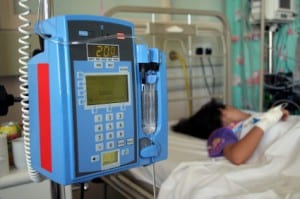
Certain attachment techniques for infusion sets can adversely prolong drug dispensing time” Umemura et al (2018). Abstract: BACKGROUND: Infusion sets designed for peristaltic finger smart pumps (PFSPs) are necessary for the pumps’ accurate handling. We previously found that medication dispensing is occasionally incomplete following the calculated infusion time when using certain combinations of PFSPs and […]
Strategies to reduce inappropriate laboratory blood test orders
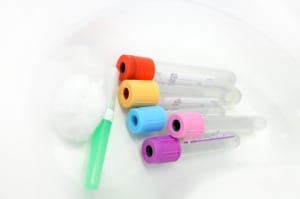
We hypothesised that a multimodal intervention program could result in a safe and effective reduction in the pathology tests ordered in our ICU” Dhanani et al (2018). Abstract: Unnecessary pathology tests performed in intensive care units (ICU) might lead to increased costs of care and potential patient harm due to unnecessary phlebotomy. We hypothesised that […]
Vascular access clinical practice guidelines of the European Society for Vascular Surgery

The ESVS has, for the first time, published clinical practice guidelines for health care professionals involved in the care of patients with vascular access (VA) for haemodialysis (HD)” Wilmink (2018). Abstract: The ESVS has, for the first time, published clinical practice guidelines for health care professionals involved in the care of patients with vascular access […]
Central catheter related venous thrombosis is associated with catheter tip depth

The presence of central vein thrombosis, location, and the depth of the catheter tip was reviewed by two experienced radiologists” Premuzic et al (2018). Abstract: INTRODUCTION: The aim of our work was to analyze the incidence of tunneled hemodialysis catheters-related thrombosis in hemodialyzed patients depending on catheter tip depth and position and to evaluate the […]
Ultrasound-guided central venous tip confirmation using right supraclavicular fossa view
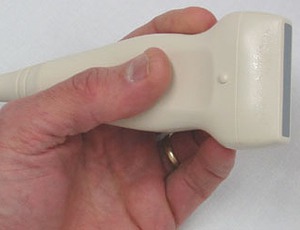
A right supraclavicular fossa view improves the accuracy of central venous catheter tip positioning and prevents central venous catheter misplacement via the right external jugular vein” Kosaka et al (2018). Abstract: INTRODUCTION: Ultrasound-guided central venous catheter tip confirmation has a potential to precisely locate the central venous catheter, preventing its misplacement, using real-time guidance. This […]
IV site monitoring and early identification of infiltration

In this paper, the performance of two non-invasive sensing modalities, electrical bioimpedance (EBI), and skin strain sensing, for the automatic detection of IV infiltration was investigated in an animal model” Bicen et al (2018). Abstract: Intravenous (IV) therapy is prevalent in hospital settings, where fluids are typically delivered with an IV into a peripheral vein […]
Risk of UEDVT associated with peripherally inserted central catheters in children with leukemia
To study the risk of catheter-associated thrombosis (CAT) between peripherally inserted central catheters (PICCs) and tunneled central venous catheters in children with leukemia” Noailly Charny et al (2018). Abstract: OBJECTIVE: To study the risk of catheter-associated thrombosis (CAT) between peripherally inserted central catheters (PICCs) and tunneled central venous catheters in children with leukemia. STUDY DESIGN: […]
Review of infusion device-related error in patient-controlled analgesia

The incidence of PCA device-related errors was <0.2% and significantly differed according to the infusion pump type” Son et al (2018). Abstract: BACKGROUND: Patient-controlled analgesia (PCA) is one of the most popular and effective methods for managing postoperative pain. Various types of continuous infusion pumps are available for the safe and accurate administration of analgesic […]
Malposition of peripherally inserted central catheter into thyroid vein
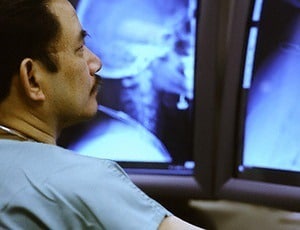
Malpositioning of a PICC can occur into any small vein. Ultrasound should be used not only to avoid malpositioning into the IJV, but also to confirm the proper position of the catheter tip during PICC insertion” Imakiire et al (2018). Abstract: BACKGROUND A peripherally inserted central catheter (PICC) causes few serious complications but can be […]
Do safety engineered devices reduce needle-stick injuries?

To assess the effect of the introduction of SEDs in preventing NSIs among HCWs in the Jeroen Bosch Hospital (JBH), the Netherlands” Schuurmans et al (2018). Summary: Background: Needle stick injuries (NSIs) are one of the most common health hazards facing health care workers (HCWs) across the globe. Needles with safety engineered devices (SEDs) have […]
What is the stability of benzylpenicillin in an elastomeric infusion pump?

However, the 24-h stability of antimicrobial agents dissolved in infusion solutions is unclear. Thus, we investigated the stability of antimicrobial agents in five different infusion solutions in a clinical setting” Nakamura et al (2018). Abstract: Some infectious diseases, such as infective endocarditis, osteomyelitis, and abscesses, require treatment with long-term intravenous antimicrobial treatment. Therefore, the patient […]
Central catheter-salvage strategy for patients with intestinal failure receiving parenteral nutrition

This observational study investigated the consequences of a catheter-salvage strategy related to CRBSIs” Tribler et al (2018). Abstract: BACKGROUND: In intestinal failure (IF) patients receiving home parenteral support (HPS), catheter-related bloodstream infections (CRBSIs) frequently result in replacement of their tunneled central venous catheters (CVCs), which may lead to future loss of central venous access. OBJECTIVE: […]
Article describes how clinicians can assess the efficacy of IV fluid administration

Nevertheless, after fluid administration, it is also essential to assess the therapeutic efficacy and to look for possible adverse effects” Monnet and Teboul (2018). Abstract: Many efforts have been made to predict, before giving fluid, whether it will increase cardiac output. Nevertheless, after fluid administration, it is also essential to assess the therapeutic efficacy and […]
Identification of risk factors for failure in patients with skin and soft tissue infections

The purpose was to determine significant predictors of treatment failure of skin and soft tissue infections (SSTI) in the inpatient and outpatient setting” Cieri et al (2018). Abstract: Purpose: The purpose was to determine significant predictors of treatment failure of skin and soft tissue infections (SSTI) in the inpatient and outpatient setting. Methods: A retrospective […]
Methods of pain management in children undergoing venipuncture
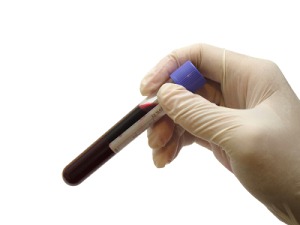
The primary aim of the study was to evaluate two non-pharmacological techniques, vibration combined with cryotherapeutic topical analgesia by means of the Buzzy® device and animated cartoons, in terms of pain and anxiety relief during venipuncture in children” Bergomi et al (2018). Abstract: Purpose: Venipuncture generates anxiety and pain in children. The primary aim of […]
Systematic review and meta-analysis on the occurrence of infusion phlebitis

The objective of this study was to determine whether any significant differences exist in the occurrence of phlebitis between catheters of 20 gauge or smaller and those larger than 20 gauge, between catheters inserted in the antecubital fossa and those inserted in other locations on the upper limbs, or between catheters inserted for more than […]
Insertion device assists the accurate placement of tunneled cuffed central venous catheter

We developed a new device to support accurate placement of the tunneled cuffed catheter. In this study, we report our first clinical experience of the device” Ohara et al (2018). Abstract: INTRODUCTION: The tunneled cuffed catheter is used in hemodialysis patients for whom an arteriovenous fistula or arteriovenous graft is not suitable or for bridging […]
Effect of intravenous infusion dead space on time to drug delivery

Infusion dead space is the internal volume of a catheter and tubing through which a fluid must pass before reaching a patient’s intravenous space. It is a factor in time to delivery for intravenous administration and can be significant, depending on the volume and rate of infusion” Gregerson et al (2018). Abstract: Infusion dead space […]
Review of pre-analytical errors in glucose tolerance testing

Evaluating the pre-analytical and pre-pre-analytical phase is essential and must be conducted routinely on a yearly basis to identify errors and take corrective action and to facilitate their gradual introduction into routine practice” Nanda et al (2018). Abstract: BACKGROUND: The pre-pre-analytical and pre-analytical phases form a major chunk of the errors in a laboratory. The […]
Risk factors associated with needlestick injuries among health care workers
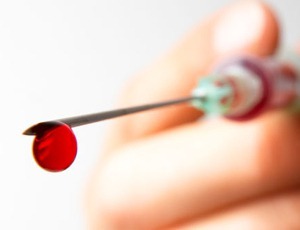
Health care workers are at high risk of job-related blood-borne diseases due to needlestick injuries (NSIs)” Gabr et al (2018). Abstract: BACKGROUND: Health care workers are at high risk of job-related blood-borne diseases due to needlestick injuries (NSIs). OBJECTIVE: To assess the risk factors associated with NSIs among health care workers in Menoufia governorate, Egypt. […]
Review of taurolidine-citrate lock solution for prevention of central catheter infection

Taurolidine is a non-antibiotic agent with broad-spectrum antimicrobial activity, which has been used as a lock solution to prevent CRBSI in some settings” Gudiol et al (2018). Abstract: BACKGROUND: Catheter-related bloodstream infection (CRBSI) is one of the most frequent complications in patients with cancer who have central venous catheters (CVCs) implanted and is associated with […]
Sudden unexpected cardio-respiratory arrest after venipuncture in children

This study aimed to investigate the clinical and socioenvironmental characteristics of sudden cardiorespiratory arrest after venipuncture in children” Jeong et al (2018). Abstract: PURPOSE: This study aimed to investigate the clinical and socioenvironmental characteristics of sudden cardiorespiratory arrest after venipuncture in children. METHODS: We conducted a retrospective email-based survey of all members of the Korean […]
Novel specimen collection system in reducing blood culture contamination rates
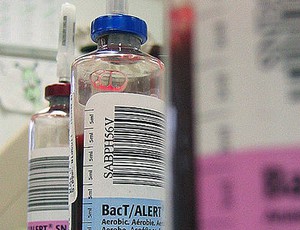
This unique collection system can reduce the risk of blood culture contamination significantly and is designed to augment, rather than replace, the standard phlebotomy protocol already in use in most health care settings” Bell et al (2018). Abstract: PROBLEM: False-positive blood-culture results due to skin contamination of samples remain a persistent problem for health care […]
Literature review of intravenous fluid therapy and shock

To determine the type of fluids to be administered and the type of approach to be performed in the different types of shock” Silva et al (2018). Abstract: BACKGROUND: shock refers to a physiological situation that puts life at risk. Its early identification and the timely institution of therapeutic measures can avoid death. Despite the […]
Article introduces DeltaVen closed-system peripheral IV cannula
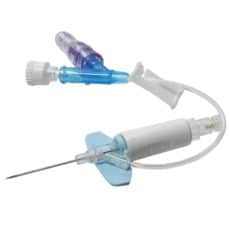
This article introduces the Smiths Medical DeltaVen closed-system peripheral IV cannula and includes three case studies describing its use in clinical practice and associated patient outcomes” Barton (2018). Abstract: Peripheral intravenous (IV) cannulas are the quickest and most effective way of gaining venous vascular access and administering IV therapy. Closed-system peripheral IV cannulas have been […]
Vessel Health and Preservation pathway for using vascular access devices

The Vessel Health and Preservation (VHP) model is a framework and pathway process, consisting of four quadrants, to guide initiation and management of treatment requiring intravenous access” Moureau and Carr (2018). Abstract: Use of intravenous devices for the delivery of medical treatment spans all healthcare facilities ranging from hospitals to clinics and home care. Clinical […]
Flushing interval for totally implantable venous access devices

The study aimed to describe the effects of prolonged FIs in a cohort of 317 patients with cancer. The authors found no significant difference in terms of TIVAD problems between long (>45 days) and short (≤45 days) FI groups, which raises questions over the validity of current practice” Rasero et al (2018). Abstract: Totally implantable […]
Assessment and maintenance of peripheral IV catheters

Improving the safety and quality of health care relies on implementing evidence-based findings into every-day clinical practice” Ray-Barruel and Rickard (2018). Abstract: Improving the safety and quality of health care relies on implementing evidence-based findings into every-day clinical practice. Numerous clinical decision aids have been developed to guide nursing care of the patient with a […]
Risks of intravenous therapy and know how to reduce them

…reflects on the potential problems that can occur with the administration of intravenous therapy” Brooks (2018). Abstract: Nicola Brooks, Associate Dean, Faculty of Health and Life Sciences, De Montfort University, reflects on the potential problems that can occur with the administration of intravenous therapy. Reference: Brooks, N. (2018) Remember the risks of intravenous therapy and […]

